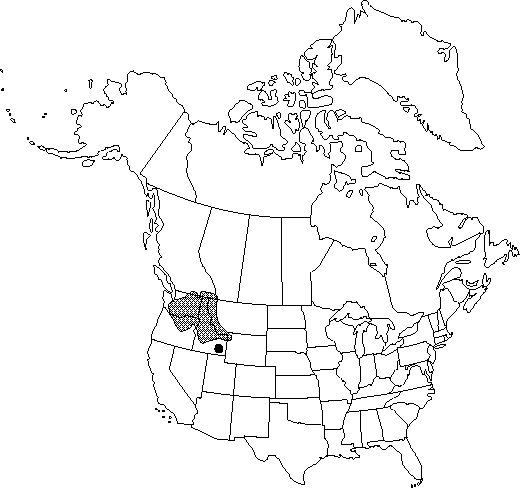Delphinium distichum
J. Bot. 6: 68. 1847.
Stems (25-) 30-60 (-80) cm; base sometimes reddish, puberulent. Leaves basal and cauline; basal leaves usually absent at anthesis; cauline leaves 9-18 (-28) at anthesis; petiole 0-9 cm. Leaf-blade cuneate to semicircular, 1-5 × 1.5-7 cm, puberulent; ultimate lobes 5-19, width 2-8 (-15) mm (basal), 0.5-3 (-5) mm (cauline); margins of basal leaf, measured less than 1 cm from blade base, demarcating considerably more than 90° of arc when leaf laid flat; most cauline leaf-blades exceeding internodes. Inflorescences 8-30 (-40) -flowered, usually dense; pedicel 0.5-1.5 cm, puberulent; bracteoles 0-3 mm from flowers, green to blue, linear, 4-8 mm, puberulent. Flowers: sepals dark blue to bluish purple, puberulent, lateral sepals ± erect, 8-12 × 3.5-5 mm, spurs straight, horizontal or nearly so, 9-15 mm; lower petal blades ± covering stamens, 4.5-6.5 mm, clefts 2-3 mm; hairs centered mostly near base of cleft, white. Fruits 7-13 mm, 3.5-4 times longer than wide, ± puberulent. Seeds: seed-coat cells with surfaces roughened. 2n = 16.
Phenology: Flowering late spring–early summer.
Habitat: Wet meadows
Elevation: 100-2400 m
Distribution

B.C., Idaho, Mont., Oreg., Wash., Wyo.
Discussion
Delphinium distichum hybridizes with D. multiplex and D. nuttallianum (D. ×diversicolor Rydberg). The name D. burkei has often been misapplied to D. distichum.
Selected References
None.
